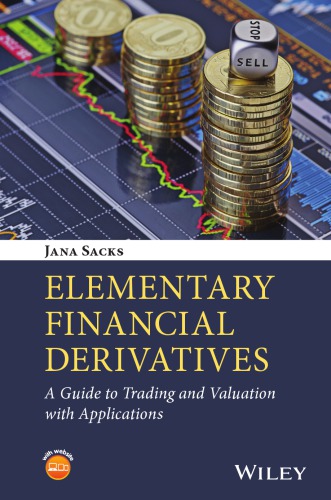THE ROLE, RISKS, AND BENEFITS OF DERIVATIVES MARKETS Derivative instruments are securities that derive their value from an underlying asset. They offer investors global diversification in financial instruments and currencies, and promise to generate returns that are superior to traditional investments. Investors in derivatives can profit from changes in interest rates and equity markets around the world, currency exchange rate shifts, and changes in global supply and demand for various types of commodities such as precious and industrial metals, oil, and grains. There are two widely recognized benefits of derivative instruments: price discovery and risk management. Price Discovery How do we determine prices? Prices depend on a continu ous flow of information from around the world and require the highest possible degree of transparency. A broad range of various elements constantly have an impact on supply and demand for assets. Information flow concerning political situations, climatic and environmental conditions, debt situation, and societal behavioral patterns constantly impacts the price of a commodity, such as wheat, soybeans, and oil. This process is known as price discovery. Futures markets in particular are a useful tool to help discover prices. Futures markets are considered a primary means for determining the spot price of an asset. The futures market is more active than the spot market; hence, information taken from it is often considered more reliable. Futures markets’ 3THE ROLE, RISKS, AND BENEFITS OF DERIVATIVES MARKETS underlying assets can be geographically quite dispersed and hence have more than one spot price in existence. The price of the contract with the shortest time to expiration often serves as a proxy for the underlying spot price of an asset. Options are also relevant in price discovery, mostly in the way the market participants view markets’ volatility. If investors think that the markets will be volatile, the option premiums (i.e., their purchase prices) will spike higher
چکیده فارسی
نقش، خطرات و مزایای بازارهای مشتقه ابزارهای مشتقه اوراق بهاداری هستند که ارزش خود را از یک دارایی پایه به دست می آورند. آنها به سرمایه گذاران تنوع جهانی در ابزارهای مالی و ارزها را ارائه می دهند و وعده ایجاد بازدهی برتر از سرمایه گذاری های سنتی را می دهند. سرمایه گذاران در مشتقات می توانند از تغییرات نرخ بهره و بازارهای سهام در سراسر جهان، تغییر نرخ ارز و تغییر در عرضه و تقاضای جهانی برای انواع مختلف کالاها مانند فلزات گرانبها و صنعتی، نفت و غلات سود ببرند. دو مزیت شناخته شده ابزارهای مشتقه وجود دارد: کشف قیمت و مدیریت ریسک. کشف قیمت چگونه قیمت ها را تعیین کنیم؟ قیمت ها به جریان مداوم اطلاعات از سراسر جهان بستگی دارد و به بالاترین درجه ممکن از شفافیت نیاز دارد. طیف وسیعی از عناصر مختلف دائماً بر عرضه و تقاضا برای دارایی ها تأثیر می گذارد. جریان اطلاعات مربوط به موقعیتهای سیاسی، شرایط اقلیمی و محیطی، وضعیت بدهی و الگوهای رفتاری اجتماعی دائماً بر قیمت یک کالا مانند گندم، سویا و روغن تأثیر میگذارد. این فرآیند به عنوان کشف قیمت شناخته می شود. به ویژه بازارهای آتی ابزار مفیدی برای کمک به کشف قیمت ها هستند. بازارهای آتی ابزار اصلی برای تعیین قیمت لحظه ای یک دارایی در نظر گرفته می شوند. بازار آتی فعال تر از بازار نقدی است. از این رو، اطلاعات گرفته شده از آن اغلب قابل اعتمادتر در نظر گرفته می شود. 3 نقش، خطرات و مزایای بازارهای مشتقات دارایی های اساسی بازارهای آتی می توانند از نظر جغرافیایی کاملاً پراکنده باشند و از این رو بیش از یک قیمت لحظه ای وجود داشته باشند. قیمت قرارداد با کوتاه ترین زمان تا انقضا اغلب به عنوان نماینده ای برای قیمت لحظه ای پایه یک دارایی عمل می کند. گزینهها نیز در کشف قیمت مرتبط هستند، عمدتاً در نگاهی که شرکتکنندگان در بازار به نوسانات بازار میبینند. اگر سرمایه گذاران فکر کنند که بازارها بی ثبات خواهند بود، حق بیمه اختیار معامله (یعنی قیمت خرید آنها) بالاتر می رود
ادامه ...
بستن ...
Author(s): Jana Sacks Ph.D.
Publisher: Wiley, Year: 2016
ISBN: 9781119076759
ادامه ...
بستن ...
CONTENTS
Preface xi
Acknowledgments xiii
Table of Figures xv
About the Companion Websites xix
1 DERIVATIVE INSTRUMENTS: CONCEPTS
AND DEFINITIONS 1
1.1 Key Derivative Instruments Definitions, 1
1.2 The Role, Risks, and Benefits of Derivatives Markets, 2
1.3 Arbitrage, 4
Case Study 1.3-1, 4
Problems, 5
1.4 Miscellaneous, 5
Problems, 7
2 FORWARDS AND FUTURES 9
2.1 Futures Fundamentals, 9
2.1.1 Futures Margin Account and Marking to Market, 17
Case Study 2.1.1-1, 19
vii
viii CONTENTS
Problems, 21
2.1.2 Futures Hedging, 21
Case Study 2.1.2-1, 23
Problems, 26
2.2 Forward Rate Agreements, 27
Case Study 2.2-1, 27
Case Study 2.2-2, 29
Case Study 2.2-3, 34
Case Study 2.2-4, 37
Problems, 38
2.3 Currency Forwards, 40
Case Study 2.3-1, 41
Case Study 2.3-2, 47
Problems, 53
3 SWAPS 55
3.1 Swaps Fundamentals, 55
3.1.1 Interest Rate Swap, 57
Case Study 3.1.1-1, 58
Case study 3.1.1-2, 65
Case Study 3.1.1-3, 68
Problems, 69
3.2 Equity, Currency, and FX Swaps, 69
3.2.1 Equity Swaps, 69
Case Study 3.2.1-1, 72
Case Study 3.2.1-2, 74
Case Study 3.2.1-3, 75
Case Study 3.2.1-4, 77
Case Study 3.2.1-5, 77
Problems, 78
3.2.2 Currency/FX Swap, 80
Case Study 3.2.2-1, 83
Case Study 3.2.2-2, 86
Problems, 89
3.3 Other Yield Curve-Dependent Swaps, 89
3.3.1 Basic Swap, 89
Case Study 3.3.1-1, 91
Case Study 3.3.1-2, 93
Problems, 95
ixCONTENTS
3.3.2 Credit Default Swap, 96
Case Study 3.3.2-1, 105
Problems, 106
4 OPTIONS 107
4.1 Options Fundamentals, 107
4.1.1 Basic Information, 107
4.1.2 Options Trading Strategies, 115
Case Study 4.1.2-1, 121
Case Study 4.1.2-2, 123
Problems, 124
4.2 Pricing, 126
4.2.1 Binomial Tree Option Pricing Model, 126
Case Study 4.2.1-1, 131
Case Study 4.2.1-2, 134
Problems, 135
Case Study 4.2.1-3, 141
Case Study 4.2.1-4, 145
Case Study 4.2.1-5, 149
Problems, 151
4.2.2 Black–Scholes Formula, 153
Case Study 4.2.2-1, 156
Case Study 4.2.2-2, 159
Case Study 4.2.2-3, 160
Case Study 4.2.2-4, 164
Problems, 165
4.3 Greeks, 166
4.3.1 Delta, 166
Case Study 4.3-1, 168
Case Study 4.3-2, 169
4.3.2 Gamma, 170
4.3.3 Rho, 171
Case Study 4.3-3, 172
4.3.4 Vega, 173
Case Study 4.3-4, 174
4.3.5 Theta, 175
Case Study 4.3-5, 176
Problems, 177
x CONTENTS
4.4 Volatility, 178
4.4.1 Delta Hedging, 178
Case Study 4.4.1-1, 180
4.4.2 Greek Neutrality, 182
Case Study 4.4.2-1, 182
Case Study 4.4.2-2, 184
Case Study 4.4.2-3, 186
4.4.3 Implied Volatility, 187
Case Study 4.4.3-1, 187
Problems, 188
4.5 Exotics, 189
4.5.1 Asian Options, 189
4.5.2 Barrier Option, 189
4.5.3 Basket Options, 190
4.5.4 Binary Options, 190
4.5.5 Chooser Options, 191
4.5.6 Forward Start Options, 192
4.5.7 Look-back Options, 192
Problems, 192
Literature 195
Index 199
ادامه ...
بستن ...










